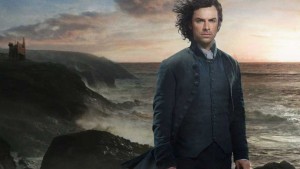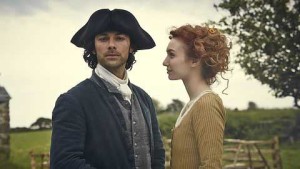
London-based visual effects studio Lexhag VFX recently relied on Blackmagic Design’s Fusion Studio 7 to create lavish set extensions and 3D matte paintings for Poldark, a new drama currently airing on BBC One and slated for U.S broadcast later this year.
The eight-part series from production company Mammoth Screen is based on Winston Graham’s first two Poldark novels. It was adapted by Debbie Horsfield and directed by Edward Bazalgette and Will McGregor. Visual effects for the series were supervised by Alexis Haggar who was involved in the series from pre-production, working closely with series production designer Catrin Meredydd as well as the series’ two directors and directors of photography.
Establishing an 18th-century mining world was an extensive task. All of the exterior mine shots were filmed on location in Cornwall, England, in and around the remaining mines that still stand today. Lexhag had one major reference image for the Grambler mine build from the turn of the century, which provided an insight into how the working mine would have looked. Using a digital scan of the location, Haggar and his team were able to build, position and light structures in both 3D and Fusion.
 “All of the major set extensions were started with a LIDAR scan,” explained Haggar. “For Wheal Leisure – Ross Poldark’s mine – the art department built the lower area’s around an existing mine on the Cornish coast and we took over for the higher elements, such as the roof structure and windows. Grambler, the large mine set into the hillside, was a combination of digital matte painting and 3D elements all composited in Fusion.”
“All of the major set extensions were started with a LIDAR scan,” explained Haggar. “For Wheal Leisure – Ross Poldark’s mine – the art department built the lower area’s around an existing mine on the Cornish coast and we took over for the higher elements, such as the roof structure and windows. Grambler, the large mine set into the hillside, was a combination of digital matte painting and 3D elements all composited in Fusion.”
“All the 3D elements were rendered as .exr files and brought into Fusion to relight and grade,” explained visual effects artist Ken Turner. “The .exr files handle multiple light passes, and masks for all of the separate elements, which gives you a lot of control for interactive adjustments in Fusion. Once the still frame was close to the finished article, I then took it into Photoshop for a final paint, breaking up the clean CG edges with grime and rock before taking it back into Fusion where I added people, smoke, grain, lens aberrations and lots of little tweaks to make the still matte painting come to life.”





